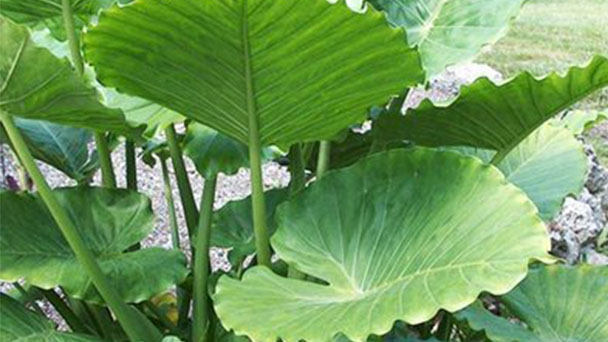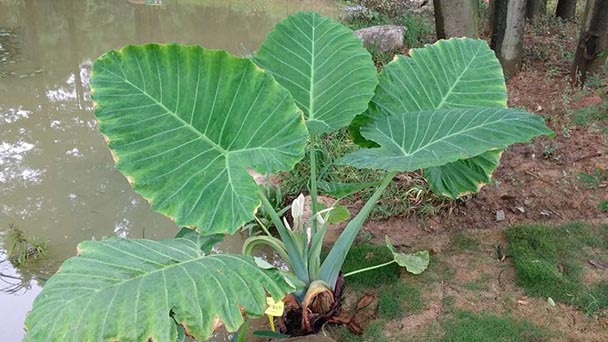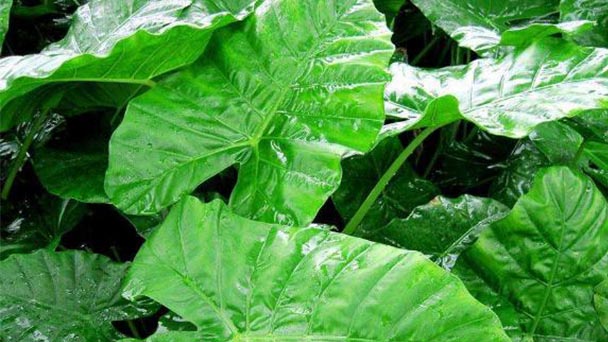Elephant Ear Plants Profile
Written by Joy
Sep 27 2020

The Elephant Ear is a tropical plant which can cultivate up to 9 feet (2.7 m) tall and sprouts large, arrow-shaped leaves like the ears of an elephant. If growing these plants, plant the bulbs in the early spring with the right soil conditions. Look after them properly with frequent watering and fertilizing to watch them bloom. When it gets cold outside, it's a good choice to dig up the bulbs to store them and plant them again next year.




Elephant Ear Plants morphological characteristicsElephant Ear Plants growth habit and growing environment and distributionElephant Ear Plants efficacy and roleElephant Ear Plants cultivation
Elephant Ear Plants morphological characteristics
Elephant Ear plants are a big, leafy member of the Caladium family. These leaves, as big as an elephant's ear, are loved by people. The colorful leaves have a shape similar to an elephant's ear as well. Homeowners are fascinated by this big-leaved plant that grows three to five feet tall. Originating in tropical and sub-tropical areas, they love sunshine, heat, and high humidity. It is easy to grow them and they will grow both in sun or shade environments.Elephant Ear Plants growth habit and growing environment and distribution
Elephant ears cannot survive in cold weather. Freezing temperatures will kill foliage and do damage to tubers. Therefore, in these areas with cruel and cold winters (like those in the northernmost areas), the plants must be brought and placed indoors. Cut the foliage back to about a couple of inches after the first frost in your area and then carefully dig up the plants. Allow the tubers to dry out for about a day or two and then store them in peat moss or shavings. Place them in a cool, dark area like a basement or crawlspace. Container plants can either be moved indoors or overwintered in a basement or protected porch. In southern areas, they can remain in the ground over winter. Add a heavy layer of mulch to protect the bulbs from freezing.In tropical and subtropical areas, they will be in good situations and grow well.Elephant Ear Plants efficacy and role
There are a great deal of uses for elephant ears in the garden. These plants own different kinds of colors and sizes. Elephant ear plants can be used as a symbol for background, ground covers, especially around pools or along streets. Their most common use, however, is as an accent or focal point. Many are even well adapted to growing in your inner room to beautify the environment.Elephant Ear Plants cultivation
Most of these plants tend to have a rich, moist environment and can be grown in full sun, but they generally can be better grown in the partial shade. The tubers can be placed directly outdoors once cruel climates have disappeared in your area. Plant the tubers about 2 to 3 inches deep, blunt end down. Planting elephant ears indoors about eight weeks prior to the last frost date is also acceptable. If growing in pots, you’d better use a rich, organic potting soil to plant them at the same depth. Harden off elephant ear plants for about a week prior to placing them outdoors.Latest Updated
- Benefits of Bugleweed - 7 Science-backed Health Benefits
- Bugleweed Dangers & Side Effects - Is It Poisonous?
- How to Plant Evergreen Trees - What You Should Know
- When to Plant Evergreens - Grow Guide for Evergreen Trees
- 12 Wonderful Evergreen Shrubs for Your Garden
- 12 Popular Evergreen Plants with Pictures for Beginners
- When And How To Prune A Lilac Bush Like a Pro
- How to Grow & Care for Lilac Vine (Hardenbergia Violacea)
- Japanese Lilac Tree (Syringa Reticulata) Care & Propagation Guide
- Shumard Oak Pros and Cons - What to Know
Popular Articles
- Winter maintenance of Antirrhinum Majus
- How to Grow Terminalia Mantaly Tree
- How to Grow and Care for Crossostephium Chinense
- How to grow Antirrhinum Majus in spring
- Peristeria Elata (Dove Orchid) Profile: Info & Care Guide
- Underwatered Snake Plant (Sansevieria Trifasciata) - Signs And How To Fix
- How to Care for Brazilian Jasmine Plant (Mandevilla Sanderi)
- How to Grow & Care for Graptopetalum Purple Delight in Summer
- Rosa Chinensis (China Rose): Plant Growing & Care Tips
- How to Care for Baby Sun Rose (Aptenia Cordifolia)